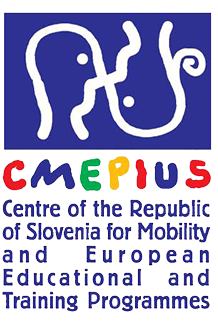DAY 1: ACCESSIBILITY and SAFETY
Welcome to DAY 1 of the learning period of the intensive one week-long event in Interdisciplinary Studies in Developing Cities for People!
During the first day of the intensive week you will firstly listen to a mix of lectures about Urban design, workshops, Design, and participation in urban open spaces and safety. Participatory Site visit, the so-called Jane’s walk in the target area will give you the opportunity to make observations about problem areas and how to find solutions. At the same time, it will also enable you to co-create and work with the local actors, residents, and other stakeholders. After the practical observations, you will start with the group work where you will share your observations and thoughts with your team members. In addition, Day 1 also contains information on how information can be used to improve accessibility.
Your main task for DAY 1 is to enjoy the urban walk and observe details (safety, accessibility). Make some photos, select 10 of them, and add comments (see example p. 8). Photos with comments of the group are part of the process doing an Analysis (Mapping handbook).
You can see more information about the work and the content of the first day below.
LECTURES:
- prof. dr. Alenka Fikfak (UL): Urban design and workshops
- assist. prof. dr. Janez P. Grom (UL): Design in urban open spaces
- assist. prof. dr. Matej Nikšič (UIRS): Participation in urban open spaces
- Hanna Iisakkila Rojas (Laurea) and Kristina Henriksson (Laurea): Safety
SITE VISIT:
Jane’s walk (Jane Jacobs walk). Jane’s Walk is an urban walking event that gathers people from the neighborhood to get to know the local area or neighborhood on foot. In the walking events, people walk around with guides and get to know, e.g., the nearby cultural sites, architecture, history, and generally both the built and natural environment. Anyone interested can participate in Jane’s Walk. It is an easy and fun way to enable social and cultural activities. At the same time, it improves the interaction between different stakeholders and can improve the spirit of unity in the region.
Involving citizens and consumers in city planning is an essential pillar of democracy. It also makes it possible to improve the quality of life. People’s needs can be understood through participation, and feedback from locals and visitors can be obtained.
City walks accompanied by facilitated discussions are ways to invite people to observe and discover public spaces and services. Participants are invited to walk in small groups and visit specific points. At designated points, they observe their surroundings and discuss predetermined themes. Participants are encouraged to share their experiences and stories about the destinations.
Walkability reflects how attractive or untrustworthy an area is from the perspective of walkers. There is more and more interest in walking in cities, and there is a clear connection between walking and social liveliness. The built environment, for example, schools, public buildings, and other facilities supports walking and contains many benefits. The value of the area increases, people’s healthy quality of life improves, and the area’s environmental sustainability improves, e.g., greenhouse emissions are reduced, etc.
GROUP WORK:
Creativity and experimental learning are inseparably linked, whereby the inclusion of the person into the experience, thinking, and group cooperation is vital (Fikfak, 2013). The course Interdisciplinary Studies in Developing Cities for People works as a “platform that opens new visions and exposes spatial and structural change (not only solutions); for the understanding of built and/or natural environments, the right way of thinking and work process is necessary, i.e. as a by-product of experiential learning. Indeed, this form of work is necessary for the development of understanding between students and teachers, and the dialogue among them (and within a group).” (Fikfak, 2013)
References:
Fikfak, A. (2013). Quality of architectural education at the Faculty of Architecture of the University of Ljubljana. Journal of architecture and urbanism. 2013, vol. 37, iss. 4, pp. 257-267. DOI: 10.3846/20297955.2013.871848.


